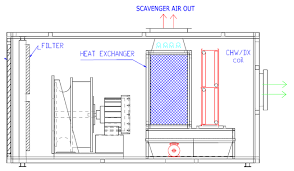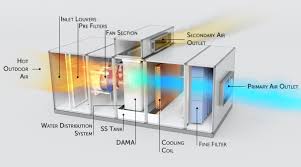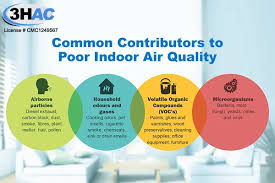
In the realm of heating,
ventilation, and air conditioning (HVAC), the concept of treated fresh air (TFA) plays a crucial role in maintaining indoor air quality (IAQ) within buildings. Let’s explore what treated fresh air units are, their purpose, and why they are essential components of modern HVAC systems.
What is Treated Fresh Air (TFA)?

Treated fresh air refers to outdoor air that has been filtered, conditioned, and sometimes humidified or dehumidified before being introduced into a building’s indoor environment. This process ensures that the air brought in from outside meets certain standards of cleanliness, temperature, and humidity, thereby improving the overall indoor air quality.
Components and Functionality
Treated fresh air units are integral parts of HVAC systems designed to handle the following functions:
- Filtration: Outdoor air often carries pollutants such as dust, pollen, and airborne particles. TFA units include filters that trap these contaminants, preventing them from entering the building and thus improving air quality for occupants.
- Conditioning: Outdoor air can vary widely in temperature and humidity throughout the year. TFA units are equipped with heating or cooling coils to adjust the temperature of incoming air to a comfortable level suitable for indoor environments. Additionally, they may include humidifiers or dehumidifiers to maintain optimal humidity levels indoors.
- Ventilation: Proper ventilation is crucial for diluting indoor air pollutants and replenishing oxygen levels. TFA units ensure adequate ventilation by bringing in controlled amounts of fresh outdoor air while exhausting stale indoor air, creating a healthier and more comfortable indoor environment.
Importance in Indoor Air Quality

The quality of indoor air significantly impacts the health, comfort, and productivity of building occupants. TFA units contribute to maintaining high indoor air quality by reducing the concentration of indoor pollutants and ensuring a continuous supply of fresh, clean air.
Applications
Treated fresh air units are commonly used in various types of buildings, including:
- Residential: Homes and apartments benefit from TFA units to enhance comfort and health for residents.
- Commercial: Offices, schools, hospitals, and retail spaces utilize TFA units to comply with indoor air quality standards and create a more pleasant indoor environment.
- Industrial: Manufacturing facilities and warehouses may use TFA units to control air quality and maintain optimal conditions for processes and personnel.
Conclusion
In summary, treated fresh air (TFA) units are essential components of HVAC systems designed to improve indoor air quality by filtering, conditioning, and introducing outdoor air into buildings. By ensuring that the air entering a building is clean, comfortable, and properly humidified or dehumidified, TFA units play a critical role in creating healthier and more productive indoor environments. As buildings strive to meet higher standards of energy efficiency and environmental sustainability, TFA units continue to evolve to meet these demands while prioritizing indoor air quality for occupants.








